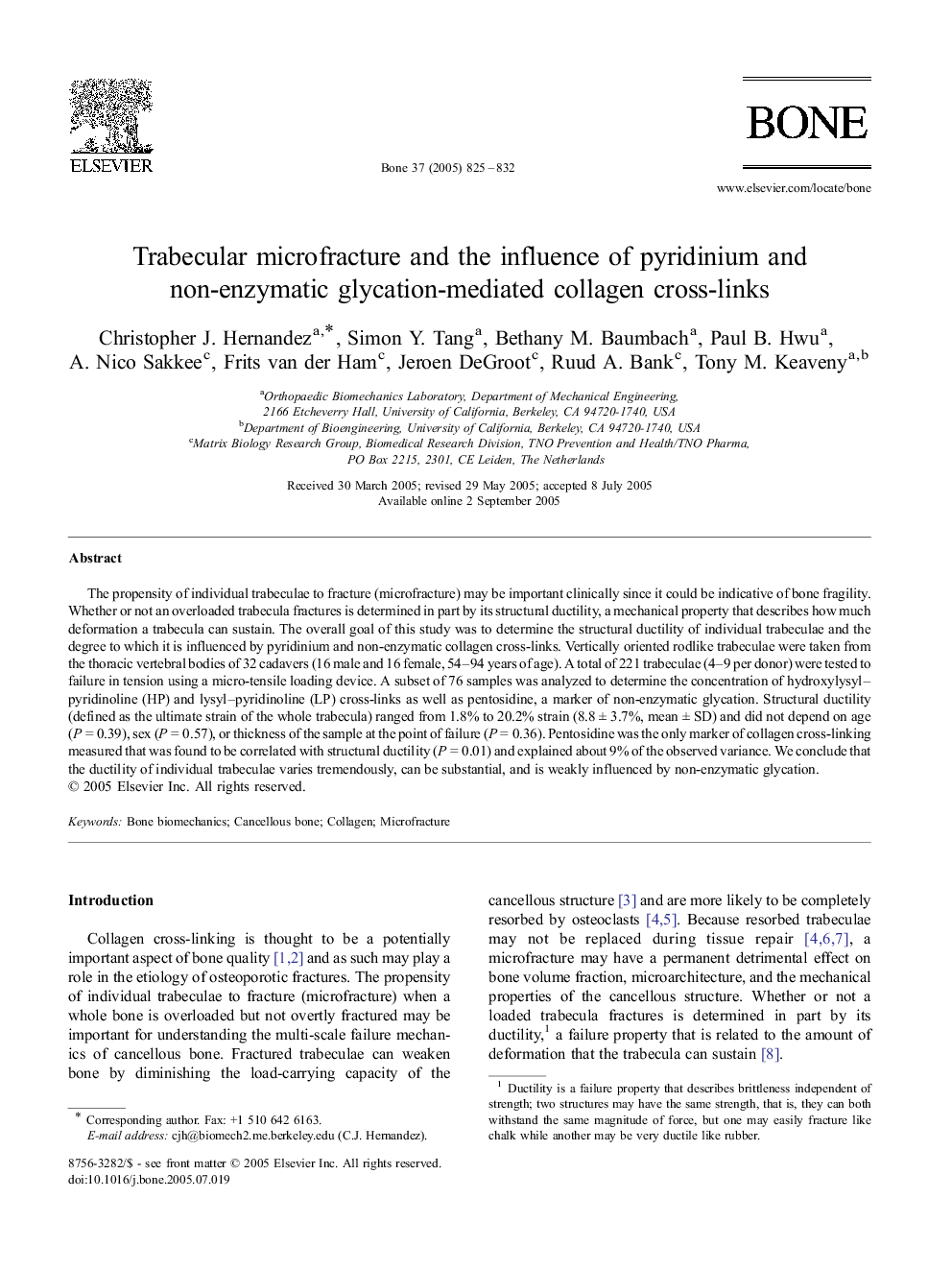| Article ID | Journal | Published Year | Pages | File Type |
|---|---|---|---|---|
| 9104573 | Bone | 2005 | 8 Pages |
Abstract
The propensity of individual trabeculae to fracture (microfracture) may be important clinically since it could be indicative of bone fragility. Whether or not an overloaded trabecula fractures is determined in part by its structural ductility, a mechanical property that describes how much deformation a trabecula can sustain. The overall goal of this study was to determine the structural ductility of individual trabeculae and the degree to which it is influenced by pyridinium and non-enzymatic collagen cross-links. Vertically oriented rodlike trabeculae were taken from the thoracic vertebral bodies of 32 cadavers (16 male and 16 female, 54-94 years of age). A total of 221 trabeculae (4-9 per donor) were tested to failure in tension using a micro-tensile loading device. A subset of 76 samples was analyzed to determine the concentration of hydroxylysyl-pyridinoline (HP) and lysyl-pyridinoline (LP) cross-links as well as pentosidine, a marker of non-enzymatic glycation. Structural ductility (defined as the ultimate strain of the whole trabecula) ranged from 1.8% to 20.2% strain (8.8 ± 3.7%, mean ± SD) and did not depend on age (P = 0.39), sex (P = 0.57), or thickness of the sample at the point of failure (P = 0.36). Pentosidine was the only marker of collagen cross-linking measured that was found to be correlated with structural ductility (P = 0.01) and explained about 9% of the observed variance. We conclude that the ductility of individual trabeculae varies tremendously, can be substantial, and is weakly influenced by non-enzymatic glycation.
Related Topics
Life Sciences
Biochemistry, Genetics and Molecular Biology
Developmental Biology
Authors
Christopher J. Hernandez, Simon Y. Tang, Bethany M. Baumbach, Paul B. Hwu, A. Nico Sakkee, Frits van der Ham, Jeroen DeGroot, Ruud A. Bank, Tony M. Keaveny,
